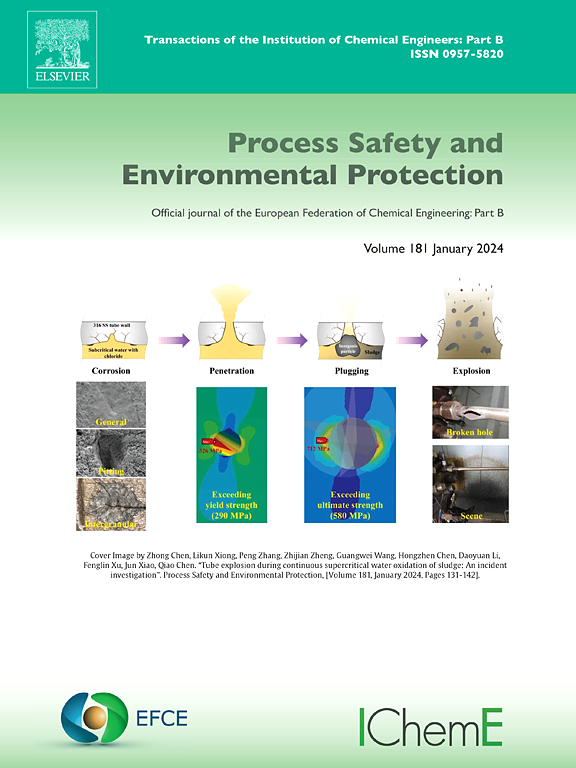Unveiling priority control toxic metal in cover soil of anti-seepage tailings ponds: Insights from multi-media and probabilistic risk model
IF 6.9
2区 环境科学与生态学
Q1 ENGINEERING, CHEMICAL
引用次数: 0
Abstract
Pollution from tailings ponds is a major environmental concern, yet systematic studies on anti-seepage tailings ponds remain scarce. This study assesses the environmental and health risks posed by heavy metals (HMs) contamination in an anti-seepage copper-nickel tailings pond located in Southwest China. Long-term monitoring and pollution assessment were conducted for cover soil, leachate, groundwater, surface water, and river sediments, along with a health risk assessment for the cover soil. Results showed that while groundwater remained uncontaminated, the concentrations of Cr, Cd, Ni, and Cu in cover soil exceeded background values by 5.8, 5.4, 4.7, and 3.6 times, respectively, surpassing regulatory limits. Leachate samples exhibited strong seasonal variation, with HM concentrations peaking during the rainy season, and Ni exceeded regulatory limits in all samples. The reuse of leachate for dust suppression was identified as a major contributor to cover soil contamination. Health risk assessment revealed unacceptable non-carcinogenic and carcinogenic risks, primarily driven by Cr exposure. Further analysis using positive matrix factorization, health risk assessment models, and Monte Carlo simulation quantified industrial contributions at 8.83 % for non-carcinogenic risk and 7.5 % for carcinogenic risk. This study provides a novel framework for integrating pollution source analysis and risk assessment in anti-seepage tailings ponds, offering valuable insights for environmental risk management and process safety.
求助全文
约1分钟内获得全文
求助全文
来源期刊

Process Safety and Environmental Protection
环境科学-工程:化工
CiteScore
11.40
自引率
15.40%
发文量
929
审稿时长
8.0 months
期刊介绍:
The Process Safety and Environmental Protection (PSEP) journal is a leading international publication that focuses on the publication of high-quality, original research papers in the field of engineering, specifically those related to the safety of industrial processes and environmental protection. The journal encourages submissions that present new developments in safety and environmental aspects, particularly those that show how research findings can be applied in process engineering design and practice.
PSEP is particularly interested in research that brings fresh perspectives to established engineering principles, identifies unsolved problems, or suggests directions for future research. The journal also values contributions that push the boundaries of traditional engineering and welcomes multidisciplinary papers.
PSEP's articles are abstracted and indexed by a range of databases and services, which helps to ensure that the journal's research is accessible and recognized in the academic and professional communities. These databases include ANTE, Chemical Abstracts, Chemical Hazards in Industry, Current Contents, Elsevier Engineering Information database, Pascal Francis, Web of Science, Scopus, Engineering Information Database EnCompass LIT (Elsevier), and INSPEC. This wide coverage facilitates the dissemination of the journal's content to a global audience interested in process safety and environmental engineering.
 求助内容:
求助内容: 应助结果提醒方式:
应助结果提醒方式:


